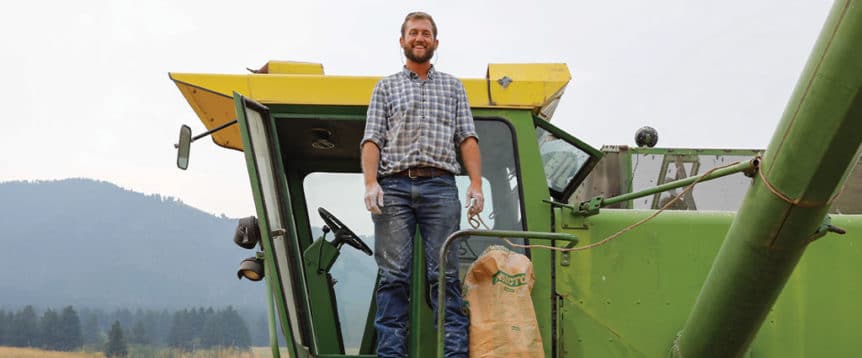Nate Powell-Palm is not your ordinary farmer. At age 29, he falls well below the average farmer age of 62. “I’m a statistical anomaly for sure. I’m doing my best to pull that number down,” he says from his home in Bozeman, Montana. But you could also consider Powell-Palm a wise soul, older than his years. Although he grew up on a 10-acre parcel where his family had chickens and horses, they were not farmers so to speak. But that environment gave him the opportunity to dream about farming. And dream he did.
When he was 9, he and his 7-yearold brother raised a steer for 4-H. At age 12, he applied for and received a junior agriculture loan from the Montana Department of Agriculture. With that money, he bought three pregnant cows and a trailer—even though he wasn’t old enough to drive yet. He also drew up a business plan and realized that you can’t make a living off of three cows. But he was undeterred. Powell-Palm found mentors and, at age 16, became the nation’s youngest farmer to be certified organic.
“I have always wanted to be a farmer. And there is something about the social and community aspect, as well as the outdoor and environmental work,” he says. “You live and die by the weather, but it is this genuine and close-knit community. That is a world I would like to see us all in one day, and my pathway to that is through agriculture.”
If Powell-Palm sounds enthusiastic, he is. Although he didn’t inherit a farm, he knocked on the doors of neighbors in the Gallatin Valley (near Bozeman) to see if anyone was willing to lease him land. He got 12 bites to start, which pieced together about 100 acres. Today, Powell-Palm leases more than 1,000 acres. He uses approximately 300 as cropland, and the rest is pasture for cattle. He now has 60 cows and has graduated from growing hay to grains, including durum wheat and yellow peas—two crops that work together to create a balanced system and diversity in the soil—for Annie’s Homegrown. “The wheat pulls from the soil and legumes give back to the soil. Peas fix enough nitrogen in the roots to feed the next year’s wheat crop,” he explains.
Acknowledging that the connection between farmer economic stability and land stewardship sometimes gets missed, Powell-Palm explains that the Annie’s project has been a beautiful example of that connection, on a small scale, because every ingredient in a box of mac and cheese comes from one or two farms. Although that is harder to scale, he says, “If we work hand in glove, farmer to food processor, there should be no economic anxiety on the part of the farmer, except for weather.”
To this end, he notes, “In a supply chain, you need to honor the farmers and the workers and everyone involved with fair compensation, as a means to giving them the tools to be the best possible land stewards they can be.” The organic seal, he says, helps accomplish that, which is a key reason why he has focused on being an organic farmer. “It’s not as necessary for the consumer to know the face of the farmer as much as it is important for them to have confidence to know there is a system that we guarantee traceability that is organic. It is a voluntary program that fixes so many of the environmental problems we have— clean soil, water and animal welfare. It is the rising tide that can lift all boats. It’s a supply chain that is really treating the planet right.”

